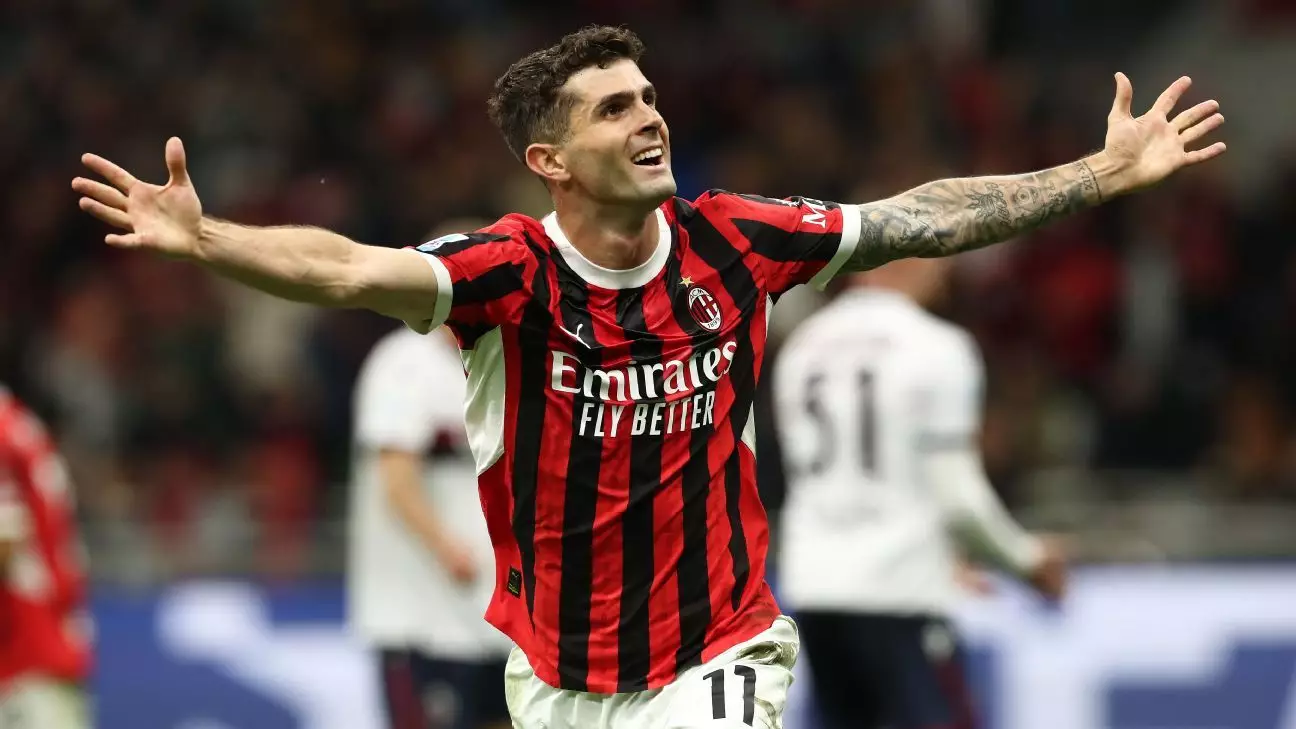The football transfer landscape is experiencing unprecedented shifts, signaling a new era of strategic investment and calculated risk-taking by clubs worldwide. Teams like Al Nassr, Borussia Dortmund, and Juventus are not merely engaging in transfer activities—they are making deliberate decisions that reflect broader financial strategies and competitive ambitions. Al Nassr’s interest in Christian Pulisic exemplifies how clubs outside traditional European giants are now positioning themselves as viable contenders by attracting high-profile talent from established leagues. This move underscores a broader trend: clubs are increasingly leveraging lucrative markets like Saudi Arabia to pursue star power, aiming to bolster their brand visibility and compete on a global scale.
Meanwhile, European clubs are adopting a more cautious approach, evidenced by Stuttgart’s firm stance against Bayern Munich’s €40 million bid for Nick Woltemade. The reluctance showcases a shift from the “buy now, worry later” mentality to a more nuanced valuation approach, emphasizing the importance of building sustainable teams. Financial prudence, combined with the desire to retain young talents, highlights a paradigm shift where clubs prioritize value over immediate gain. This shift is also evident in Bayern’s ongoing negotiations for players like Luis Díaz and Xavi Simons, prioritizing long-term squad development amidst fluctuating market valuations.
Emergence of Strategic Alliances and Power Shifts Among Top Clubs
A clear pattern emerging from recent transfer activity is the realignment of power among Europe’s elite clubs. Real Madrid’s keen interest in Ibrahima Konaté indicates a strategic move to bolster their defensive line ahead of upcoming domestic and international tournaments. The fact that Konaté has rejected Liverpool’s extension offers demonstrates the club’s intent to leverage player dissatisfaction or transfer leverage. Madrid’s calculated approach suggests they see an aging or unsettled defense as an opportunity to strengthen without overpaying—highlighting their mastery in strategic signings.
Comparable to Real Madrid’s calculated maneuvering, AC Milan is carefully observing Juventus’ Dusan Vlahovic saga, hinting at a broader strategy to identify undervalued assets in the transfer market. Their readiness to step in for a striker seeking a departure reinforces the competitive tension among top-tier clubs vying for the same talent pool, often resorting to patience and tactical planning over impulsive bidding. The intricate dance of negotiations reflects a shift towards smarter, data-driven decision-making—a necessity in a market that values both financial sustainability and sporting excellence.
Market Exploitation and the Rise of Non-Traditional Football Nations
The expansion of financial influence into lesser-traditional football nations and markets is reshaping the sport’s global hierarchy. Al Nassr’s pursuit of Christian Pulisic, accompanied by discussions to include seasoned players like Aymeric Laporte, emphasizes how the Middle East’s infusion of capital is elevating the competitiveness of leagues outside Europe’s traditional centers. Such moves threaten to recalibrate the global football balance, creating a new elite league capable of attracting stars who might have otherwise remained loyal to European giants.
Furthermore, clubs from Turkey (Galatasaray) to Germany (Bayer Leverkusen) are engaged in strategic negotiations, showcasing a developing landscape where talent is increasingly mobile across borders. The increasing willingness of clubs in these regions to shell out significant sums—such as Napoli’s tentative push for Lorenzo Lucca or Lille’s negotiations over Matías Fernández-Pardo—reflects a marketplace actively expanding its reach. Such dynamics foster a more interconnected, competitive environment, ultimately heightening the stakes for traditional powerhouses looking to retain their dominance.
Financial Calculus and the Reality of Player Valuations
In the midst of these high-stakes negotiations, one element remains constant: financial prudence and refinement. Stuttgart’s rejection of Bayern’s €40 million bid for Nick Woltemade and their valuation of €80 million highlight the importance of realistic assessments over impulsive spending. Similarly, Manchester United’s potential sale of Jadon Sancho to Juventus, with a €10 million offer, illustrates that even high-profile players are subject to reevaluation based on market conditions.
This emphasis on valuation precision is reshaping transfer strategies, forcing clubs to consider both immediate needs and long-term fiscal health. It also influences decision-making processes, whether it’s Real Madrid’s cautious approach toward Rodrygo’s potential transfer costs or Barcelona’s probing of Nicolas Jackson over a €50 million price tag. The market’s evolving nature calls for a more sophisticated understanding of player worth, emphasizing quality, potential, and fit over mere fame or past performance.
The Tactical Playbook of Modern Transfer Windows
Today’s transfer window is less about seismic blockbuster deals and more about calculated, layered maneuvers designed to maximize value and strategic advantage. The impending arrivals of Luka Modrić at AC Milan, the potential signings of players like Neil El Aynaoui, and the premeditated loaning of prospects such as Mike Penders reflect a broader philosophy: building a versatile, adaptable squad capable of competing on multiple fronts.
Clubs are also increasingly exploring alternative avenues, such as exploring the potential of younger talents like Archie Brown or exploring stagnant markets to identify undervalued future stars. The planned moves and negotiations—such as Napoli’s progress on Lorenzo Lucca or Bologna’s concessions on Matías Fernández—highlight a transfer ecosystem that values patience, precision, and strategic foresight. As the sport evolves, the most successful teams are those that master this kind of chess game, balancing immediate needs with long-term ambitions and financial sustainability.
In the end, the current transfer market reveals a sport in transformation—one where intelligence, strategy, and financial discipline are becoming the ultimate currencies driving success on the pitch.

